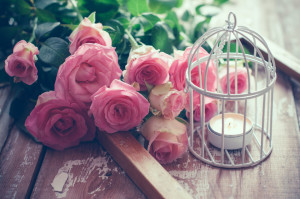Identifying Flowers That Complement Vegetables and Repel Pests
 There’s no rule that requires you to keep your flower and vegetable gardens separate, with flowers in the front yard and veggies contained to the back. Pairing the right combinations of flowers with vegetables is not only attractive; it keeps insects and other pests at bay. Identifying flowers with the right characteristics is a good first step, but there are some tips that might help ensure success:
There’s no rule that requires you to keep your flower and vegetable gardens separate, with flowers in the front yard and veggies contained to the back. Pairing the right combinations of flowers with vegetables is not only attractive; it keeps insects and other pests at bay. Identifying flowers with the right characteristics is a good first step, but there are some tips that might help ensure success:
Think integration: You might envision a border of marigolds surrounding your vegetables to keep pests away, but it could be a better plan to integrate flowers among your vegetables. This can be an effective strategy because the larvae of any insect are not likely to travel far, and if they can only get to your next tomato plant by crossing a marigold, they’re more likely to only infest that single plant.
Stagger the heights of plants: There’s a lot to consider when identifying flowers for use in your vegetables, but you should certainly think about the visual appeal of staggered plant heights. You can also go by a general rule of thumb that taller plants should be planted on the north and east sides of the garden. Consider proportions in your placement so that you don’t have a tall sunflower dwarfing a tomato plant or some loose-leaf lettuce.
Try out fun color combinations: When you choose flowers, think about what colors will complement the colors of your veggies. Maybe you’d like bright yellow flowers next to your eggplants or red flowers planted near a cucumber or zucchini plant. Consult a color wheel to determine which colors might make your garden pop.
Choose flowers for ongoing blooms: While identifying flowers for your vegetable garden, consider including varieties that will bloom at different times throughout the growing season. This provides a steady supply of pollen and nectar for helpful insects and birds and allows you to enjoy an ongoing show in your garden.
Choose the best varieties for your garden: There are a lot of considerations that go into identifying flowers that will work best for your garden, including your climate, the types of insects you’re trying to repel and the vegetables you’re growing. Bees and birds love sage, while marigolds are great for protecting bush beans, squash and peppers. Butterflies love the large blooms that zinnias provide.
Integrating flowers into your vegetables can help reduce the amount of pest chemicals and fertilizers that you require, but managing the organization can get tricky. Invest in a set of Kincaid Plant Markers to help you distinguish flowers and vegetables and give each plant the care it needs. Take a look at our full selection of plant markers to choose a set that will provide a lifetime of gardening.









